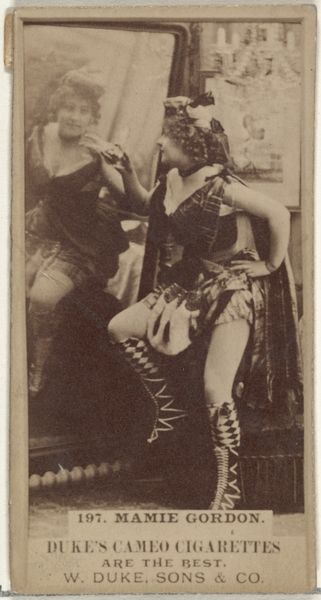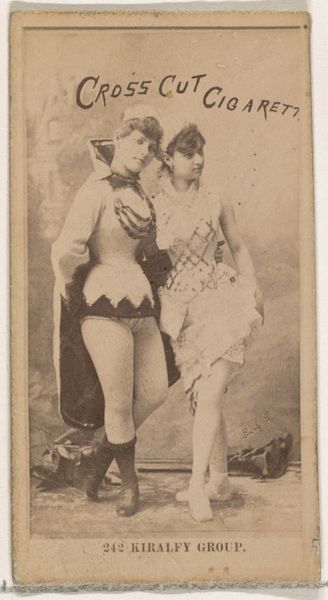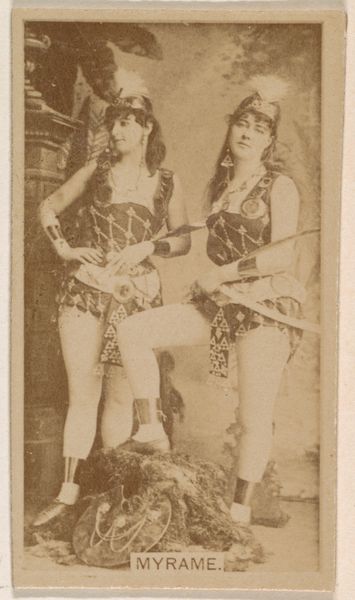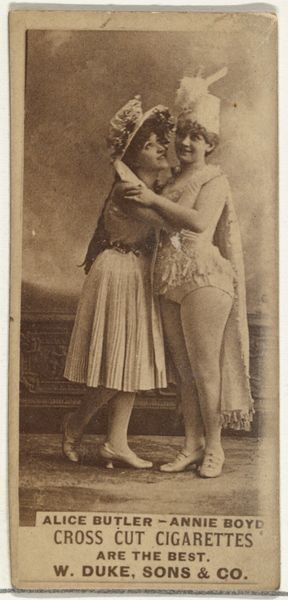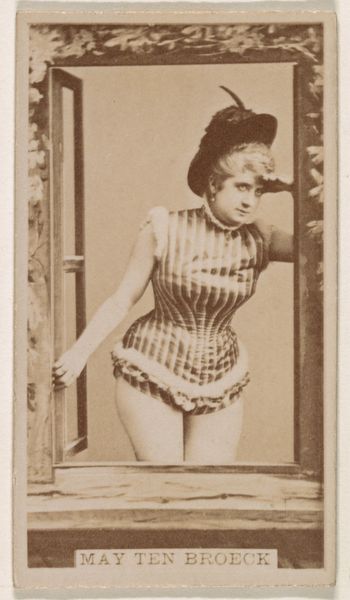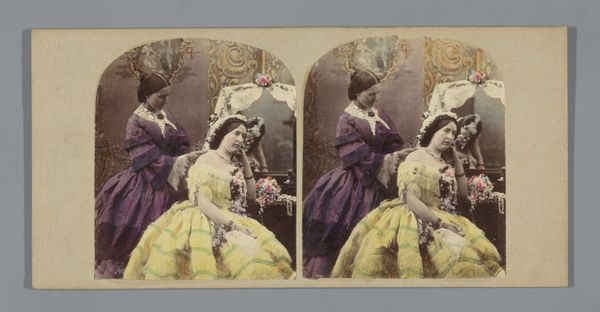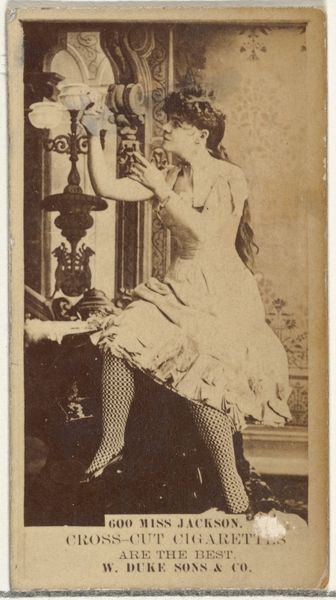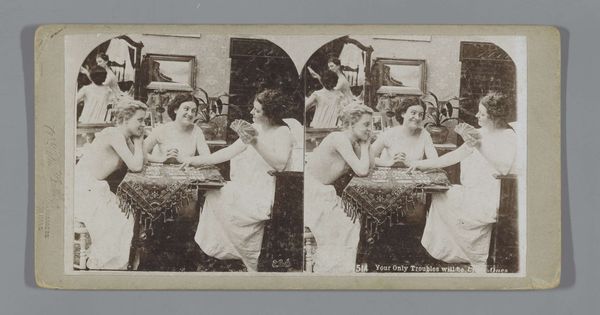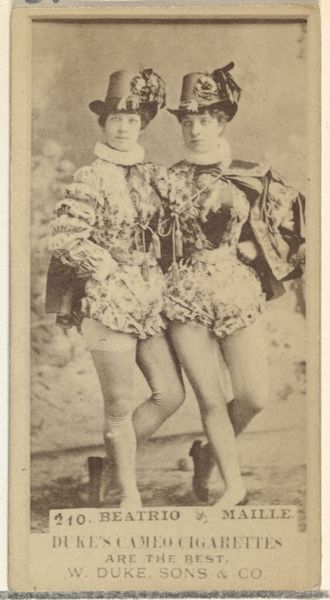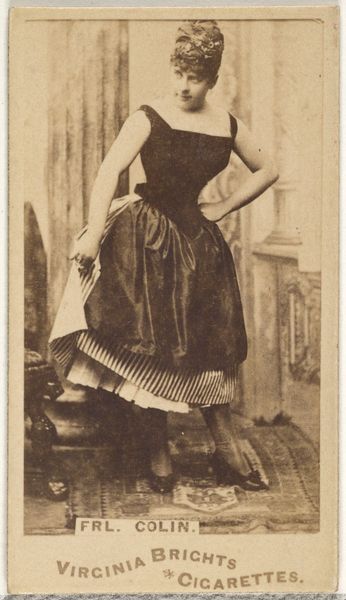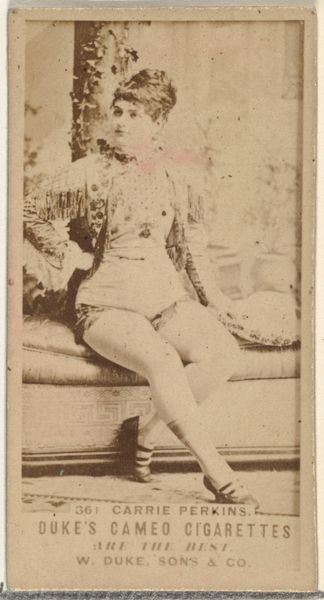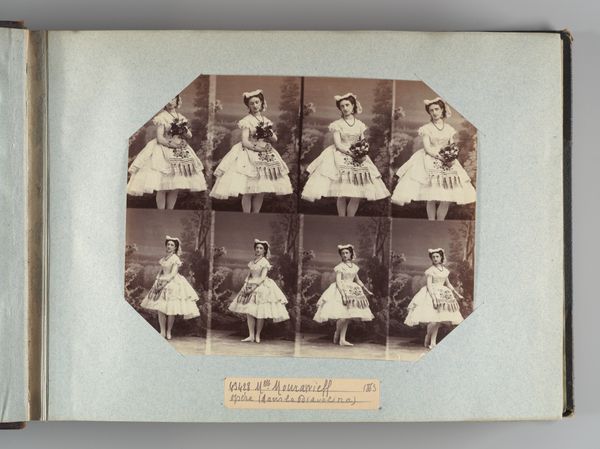
photography
#
portrait
#
photography
#
genre-painting
Dimensions: height 87 mm, width 178 mm
Copyright: Rijks Museum: Open Domain
Curator: What a striking image! This is a vintage stereoscopic photograph, "Two Women Before a Painted Backdrop," dating roughly from 1855 to 1875, created by an anonymous artist. Editor: It's playful, almost theatrical. The setting, that slightly too-perfect backdrop, and the outfits. You can almost feel the stiff crinoline beneath that dancer's skirt. And those bathing costumes! It makes you wonder about the fabrics and the work it took to create this scene, all to be immortalized as a reproducible photograph. Curator: Indeed. The performative aspect is key. Stereoscopic photographs like this were hugely popular; offering a sense of depth and realism to domestic viewing. They presented idealized scenes of everyday life and even, perhaps, escapism for a rapidly urbanizing populace. Editor: Reproducibility really shifts how we look at things, doesn’t it? Photography democratized image-making. While the painted backdrop evokes traditional artistic status, photography allowed for mass consumption, influencing taste and bringing artistry to wider audiences, literally processing labor and material into something people could hold. Curator: Absolutely. This image sits at an interesting point, capturing the changing role of women within public visual culture. Note the assumed camaraderie and the staged naturalness of the scene, which probably served to promote female sociability and changing notions of what's appropriate as public portrayal. Editor: There's something inherently political about the commodification of the body and beauty. Think of the material constraints – the clothing itself, constructed for specific roles, literally shaping the figures to meet beauty standards of that period. Photography as a new industrial medium adds another layer. Curator: That interplay between access, artifice and ideology is particularly evident here. As such, photographs became artifacts within broader societal shifts regarding gender, performance, and the evolving parameters of social representation. Editor: It leaves you pondering how processes—the wet collodion perhaps, the printing, framing—shaped not just the image but our expectations. Considering all these elements, this piece becomes a profound commentary of a precise moment within a larger framework, if you ponder on those dresses made in piece work, those industrial photographs, or these women as representations, all available in trade. Curator: It is remarkable how an apparently simple image can invite such a complex discussion about material processes and its place in broader histories! Editor: Precisely. By seeing it that way, one tiny material at a time, makes you perceive something different as if we touched it and even experienced those women’s lives!
Comments
No comments
Be the first to comment and join the conversation on the ultimate creative platform.
